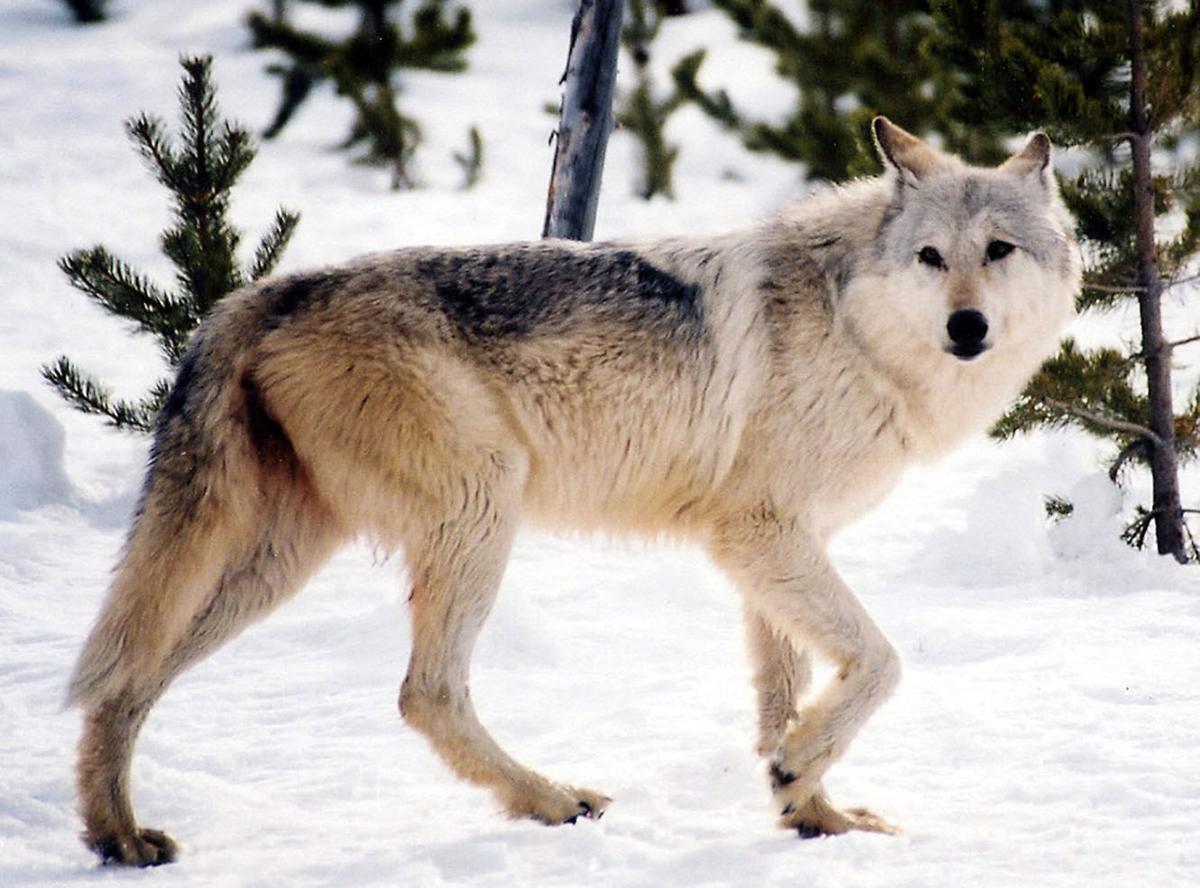TOM KUGLIN for the Missoulian
In its annual
report released Friday, the U.S. Fish and Wildlife Service in
collaboration with other federal, state and tribal agencies, detailed
2015 wolf populations in the Northern Rockies. At least 1,704 wolves in
282 packs were observed in Montana, Idaho and Wyoming last year,
determined by federally mandated minimum counts in the three-state area.
An additional 200 wolves in 34 packs are estimated in Oregon and Washington.
“The wolf population has exceeded
recovery goals identified by the service and partner biologists in 2002.
Wolves continue to expand their range westward in eastern Oregon and
Washington,” USFWS said in a news release.
Management
targets for the Northern Rockies call for Montana, Idaho and Wyoming to
each maintain a minimum of 15 breeding pairs and 150 wolves. Minimum
counts estimated 536 wolves with 32 breeding pairs in Montana; 786
wolves with 33 breeding pairs in Idaho; and 382 wolves with 30 breeding
pairs in Wyoming.
The report
comes in the fifth and final year of federal monitoring of the minimum
counts under the predator’s 2011 delisting from the Endangered Species
Act. The oversight, meant to ensure the states stayed above mandated
minimums, ends in May for Montana and Idaho.
Wolves remain under federal protection in Wyoming, Oregon and Washington.
A
coalition of conservation groups has threatened litigation if federal
monitoring ends, citing concerns that liberalized harvest regulations
may reduce the populations below standards.
“Given
the situation on the ground and the ways state policy is changing, we
think the prudent thing to do is keep monitoring wolf populations so
they’re not hunted and trapped back to the brink of extinction,” Mathew
Koehler of Missoula-based Wild West Institute told the Missoulian.
Wolves are classified as a
big-game animal in Montana with regulated hunting and trapping seasons
along with lethal removal for threatening or killing livestock.
Last
year, the state documented mortality at 276 wolves, down from 308 in
2014. The figures include all deaths including those from vehicles,
poaching and disease.
Of the
276, 39 wolves were killed due to livestock depredation and another 12
were killed for threatening livestock or pets. Officials documented 64
depredations last year, up 17 from 2014.
As Montana looks to the end of
federal oversight, FWP is also looking forward to a new monitoring
method officials believe will provide better population estimates, said
Game Management Bureau chief John Vore.
Called
“patch occupancy modeling,” FWP has used the statistical approach in
recent years along with the minimum counts. The method, which is much
less expensive, uses deer and elk hunter observations coupled with
information from radio-collared wolves to estimate population and range.
FWP
will continue the minimum count for a couple of years along with the
modeling, Vore said. The department knows that because the minimum count
only documents wolf observations, the difficulty of counting higher
populations in difficult terrain means wolves are significantly
undercounted, he added.
Eventually, graduating to patch occupancy modeling should provide a truer count as shown in current research, Vore said.
“We’ll
continue (minimum counts) until we get our POM very refined and
robust,” he said. “It speaks to how the minimum count has really fallen
behind with what we’ve needed with growing populations and some staffing
issues. We’re very excited to have a more realistic population
estimate.”
The end of federal
oversight also means the loss of some funding, but Vore noted the cost
savings associated with patch occupancy modeling. While FWP will
continue to employ wolf specialists, the minimum counts require more
seasonal employees and time in airplanes not necessary with modeling.
source
source



No comments:
Post a Comment